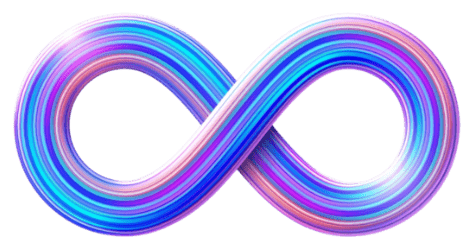now playing:
More
- Blues TurnaroundsLEVEL 2Library of most common Blues Turnarounds.
- Blues TurnaroundsLEVEL 4If you've ever wanted to know what those cool rundowns and riffs are at the end of a 12 bar this lesson is just what you need!
- Essential TurnaroundsLEVEL 55 classic turnarounds!
- Blues Turnarounds/EndingsLEVEL 4Enrich your blues playing arsenal with a series of cool turnarounds/endings.
- Pull-OffsLEVEL 1Let's dive into pull-offs! If you're interested in learning to play with some killer legato, this is the place to start. Pull-offs are the second half of legato (check out my hammer-ons lesson for the first half!). We'll progress from absolute beginner to more advanced beginner through this lesson and learn some fun licks along the way!
- 10 Jazz Blues TurnaroundsLEVEL 410 Great Jazz Blues Turnarounds in a I, VI, II, V chord progression
- 5 Turnaround LicksLEVEL 65 phrasing examples over the final section of a 4/4 slow Blues.
- Capricho Arabe (1/3)LEVEL 5Famous guitar serenata by Francisco Tarrega.
- BWV 997 Gigue (1/3)LEVEL 5First part of the gigue from the BWV 997 lute suite by J.S.Bach.
more
easier
Feedback
lola24th July 2009
Super lesson!
 ItsMe30th September 2008
ItsMe30th September 2008The theory is very well explained
 ItsMe30th September 2008
ItsMe30th September 2008That's really helpfull I'm already onto it.
 kaznie_NL21st September 2008
kaznie_NL21st September 2008Gerardo on electric, how cool!
 Jerry Arcidiacono21st September 2008
Jerry Arcidiacono21st September 2008Nice progressions and great lesson

 Gerardo Siere21st September 2008
Gerardo Siere21st September 2008Thank you guys. I´m glad you liked it.
 Hisham Al-Sanea20th September 2008
Hisham Al-Sanea20th September 2008great one as usual Gera
 Nemanja Filipovic20th September 2008
Nemanja Filipovic20th September 2008Great lesson man,I am for shore learning that progression.
 Kuba Szafran20th September 2008
Kuba Szafran20th September 2008Hello Gerardo, those chords sound really nice! I also like your Carvin axe.
 sigma720th September 2008
sigma720th September 2008haha nice to see you on the electric very nice chords
 Muris Varajic20th September 2008
Muris Varajic20th September 2008Nice chords Gerardo!!

 Emir Hot20th September 2008
Emir Hot20th September 2008cool progressions and very useful
 Capt.Z20th September 2008
Capt.Z20th September 2008Very nice!
 Bogdan Radovic20th September 2008
Bogdan Radovic20th September 2008Useful turnarounds ideas Gerardo!

 Pedja Simovic20th September 2008
Pedja Simovic20th September 2008Pretty cool turnarounds , I like it!
 Ivan Milenkovic20th September 2008
Ivan Milenkovic20th September 2008Very in-depth lesson Gerardo, great job man.
 Nazgul20th September 2008
Nazgul20th September 2008Very useful! I think I'll have to try that.

Practicing Peers
- Total views: 0
- Member views: 0
- Guest views: 0
- Lesson
- My notes
Hello everyone, today I will start a series of typical harmonic progressions, this series will have several purpouses:
1) show you many examples possibilities of a given progression in several different keys. It is no use to say, "oh Bb Major, it is just a fret away from A major", if you can learn A major in the fretboard you will have no trouble with Bb major. Even if you are using a transportable shape it is neccesary to know where is placed with no second reference needed.
2)Close voice leading: I will explain how did I approach to voice leading from chord by chord.
3)Substitutions: I will show you how different chords can be substituted in the examples, some are obvious substitution, some requiers to look at the whole form structure to guess what is the target chord for a substitution.
4)Top notes in chordal structures: this examples will show you how I deal with diatonic and chromatic melodies over a given chord progression, all the progressions were constructed this way. This is what you have to deal with when arranging for chord melody.
5)Learn to make your own progressions: I made a resume with all the 23 progressions showing the actual chords, the grade in roman number (you will need some kind of abstraction to apply in other keys or context), also the grade shows if the chord is, major/minor, diatonic, chromatic or altered. For the third column we'll show the chords function, because even the same chord can in different context have a complete different effect. With this table you can group this chords in three categories (major, minor, dominant, by grade, by target, etc.
6) Make your own progressions with subtraction: this progressions have all 9 chords, try taking out some of them and see if the result is good, also try leaving only the top note, or the bass, you will be surprised of how many nice things you can come up with.
7)Learn new chords, may be there are some voices here that you don´t know.
8)Learn to deal with the special and ambiguous chord, I shall explain case by case which chord I call ambiguous and why I do that, and I will show how to take advantage of them, you will see a lot of this chords on jazz and bossa nova.
9)You'll get a little collections of intros, bridges and endings: this turn around pogression (I-VI-II-V) not only has a lot of useful chord relationships worth knowing, but in a lot of styles they have a big structural role, so you will gain a lot by having some turnaround at hand.
10)Have a nice chord knowledge of the first frets of the guitar, I avoided to go very far on purpouse, in later lessons I will go further and will be using specific and transportable shape structures.
I made this progression as a tribute to a local player that is a guitar wizard, who can play any style in anything with 6 strings. His name is Marcelo Villegas, he teached me my first C major scale (C shape of the caged system) when I was 17 (I´m getting quite nostalgic here, sorry). He isn´t a book of theory but he applies it incredibly with such a nice tone and phrasing. I used to go to his house and then he should play some popular songs, I recorded them, asked some questions and then transcribed them and try to figure out why if this guy was using the same voicings as me, still he could get such amazing results (mine are very poor and inconsistent).
One last word on chords, unfortunately, not all voicings work so well in all styles, some "grooves" better than others, so the best way to know is playing a lot of songs and make a lot of arrangements with the lot or little chords you know, this are just 23 progressions of 9 chords. They alone will not bing you very much improvement, I hope this series inspire you to search for new stuff or just to have a good time.
Ok here is the table for the first 8 chords and the score, the roman numbers in the "grade column" that are with lower case are minor chords. You can look for a pdf higher resolution version at my instructor board. Have fun!




From this course:
Scrubbing / forward / rewind: arrow right, arrow left keys
Jump to start: Home or `s` , you can also click/tap the lesson part again (the numbers above player)
Go to next part: PageUP or End.
Volume: ArrowUp / ArrowDown keys
Go to any part: Number keys (combinations also possible)
Pause or play: `k` or space key
Fullscreen: `f`, esc to close
Increase / decrease speed : `+` or `-`
Jump to start: Home or `s` , you can also click/tap the lesson part again (the numbers above player)
Go to next part: PageUP or End.
Volume: ArrowUp / ArrowDown keys
Go to any part: Number keys (combinations also possible)
Pause or play: `k` or space key
Fullscreen: `f`, esc to close
Increase / decrease speed : `+` or `-`







